Ten Reasons to Love Cross Processed Film

First of all, film is great. You guys are probably going to get sick of hearing about film from me over the next couple of months — I just bought two more film cameras (yes, both are Minoltas) and a gob of film to run through them.
I'm fairly new to film, but I'm already starting to set a few personal preferences. I've shot two rolls of color film: one roll of Ektachrome cross processed and one roll of Velvia not cross processed. I should've cross processed the Velvia too.
Don't get me wrong, standard color film photos have their place and I'm not knocking them. But for my own artistic preferences, I find the cross processed photos to be more interesting and captivating. Here are some reasons why I love cross processed film — and I'm not talking about the Photoshop Cross Processing Technique — this is the real deal!
1: CLASSIC STYLE
Combine cross processing with the quirks and character of an old camera and glass, and you've got a winning combination. These photos can have such a classic look to them, often appearing as if they came from a different era altogether.
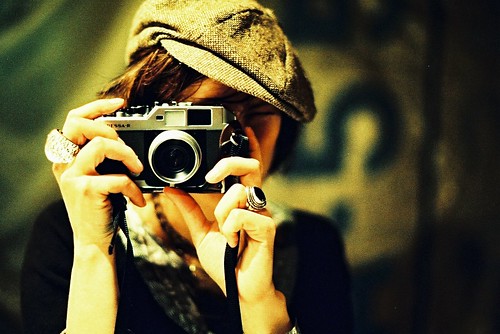
![]() photo credit: kk+
photo credit: kk+
2: DEEP AND DARK
Cross processing tends to darken the shadows of some photos while really pushing the saturation up. This results in a very rich image with deep shadows approaching pure black. A great way to add a dark mood to your photo.
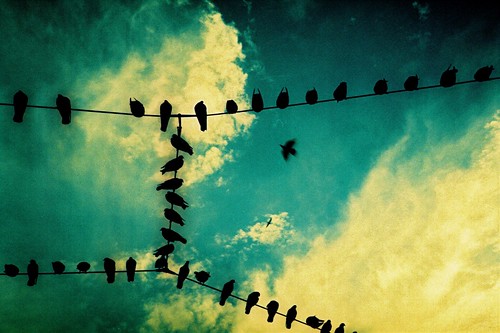
![]() photo credit: bricolage.108
photo credit: bricolage.108
3: BRIGHT AND COLORFUL
Colors become brighter and bolder than usual when cross processed. Blues, greens, and yellows tend to stand out the most. Additional color casts can also produce wild and unnatural results.
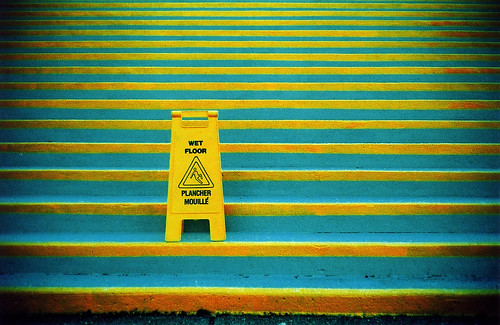
![]() photo credit: neil-san
photo credit: neil-san
4: SUBTLE
Not all cross processed photos have massive color shifts, huge amounts of contrast, or extreme colors. Sometimes they turn out very subtle. That's the fun of cross processing — you never know exactly what you're going to get.
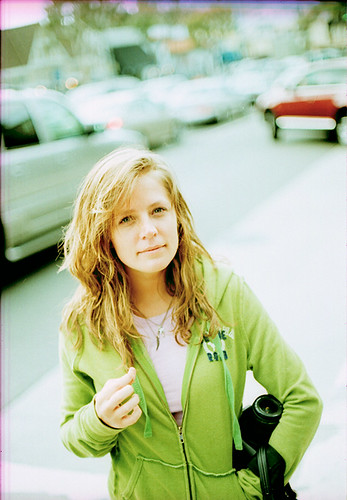
![]() photo credit: auer1816
photo credit: auer1816
5: OBVIOUS
On the other hand, some cross processed photos turn out with extremely heavy color shifts and very obvious tints. Some even appear to be duotone in nature.
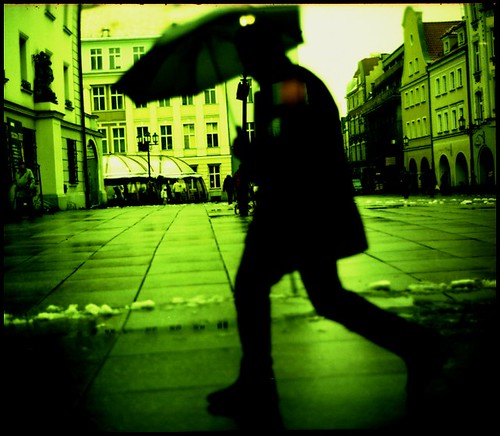
![]() photo credit: mentitore
photo credit: mentitore
6: GREEN
The green shift is very common, and it's a classic cross processed look.
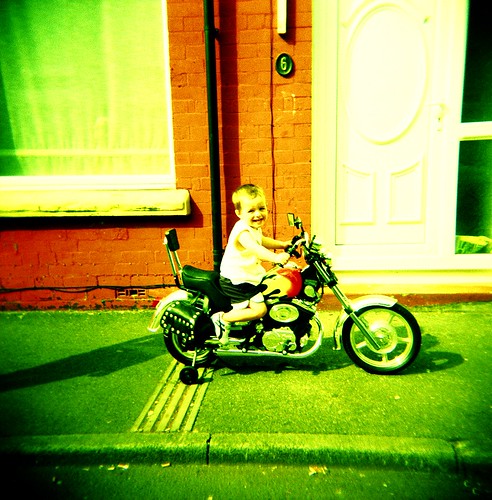
photo credit: Chick Dastardly
7: BLUE
Blues are also pretty typical, giving a slightly different feel to the photo. Blues and greens can often be found together.
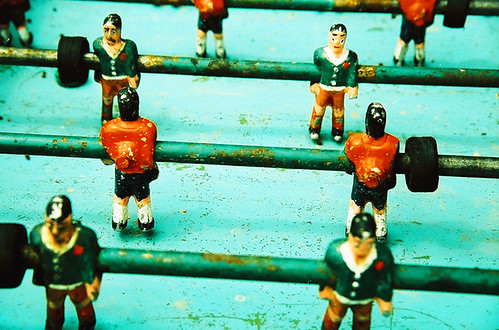
![]() photo credit: boskizzi
photo credit: boskizzi
8: RED
Reds are less typical, but can be produced by using the right films and chemicals. Magentas also usually tag along with the reds.
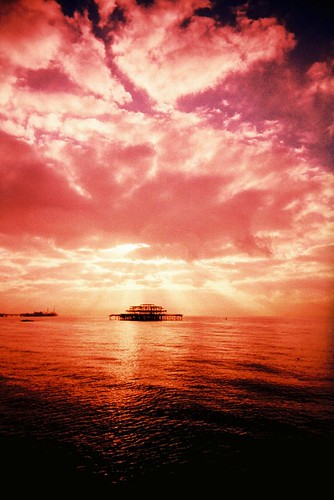
![]() photo credit: slimmer_jimmer
photo credit: slimmer_jimmer
9: YELLOW
I see even fewer yellows than reds, but the effect can be brilliant.

![]() photo credit: johnnyalive
photo credit: johnnyalive
10: EXTRAORDINARY
The coolest thing about cross processed film is that you can take a photo of something fairly ordinary and turn it into something extraordinary. The new textures, colors, and contrasts bring a whole different view to the image.
So seriously, if you're like me and you start shooting film after digital, grab a few rolls of different color films and have them cross processed. You're not likely to be let down by the results!
Antoine Khater
May 23, 2008I’m having enough trouble finding money for my digital gear and you want me to start investing in a film body ???
Arggg I hate you !
R. Kneschke
May 23, 2008Man, you almost made me regret that I sold my film camera years ago…
Damien Franco
May 23, 2008Funny thing. I’m sending my old film camera to the camera store to get cleaned and looked at, and I just got a hold of my dad’s old Polaroid SX-70. Oh yeah, I’m getting excited about film again!
the_wolf_brigade
May 23, 2008I started a revolution! hehehe
Now, to get you interested in box cameras….I’m having great fun shooting on a Kodak Brownie box lately.
I’m hoping to get to some more Xpro tomorrow.
Sean McCormack
May 23, 2008I’ve spent the afternoon repairing my EOS 5 command dial to get shooting film again. Looking forward to a little cross processing!
Brian Auer
May 23, 2008@Antoine – It’s the film that’s expensive, not the equipment! I just bought a working camera for $35 — nice old rangefinder.
@R.Kneschke – Almost? Dang, I guess I should have added a little more pizazz to this thing.
@Damien – That’s really awesome! Take advantage of that Polaroid while you still can.
@the_wolf_brigade – You certainly have, my friend! I did just buy a TLR, but I’ve been eying some of those Ensigns over at OzCamera.
@Sean – That’s awesome man! I’m looking forward to seeing some of those photos — toss ’em into our Flickr pool when you do!
cmiper
May 23, 2008Great post Brian.
I may have mentioned it to you in the past, but I keep my cost down by bringing my film in to Target and asking for the “CD Only”. They’ll process the film and scan it to CD usually for $1.99, though the price is supposed to be $2.99 (processing + scans), they usually just charge for the CD scans when you put the specific directions on the envelope. I also tape over the canister with black tape and tell them to process it normally, they usually don’t question it. You can also upgrade to the high res scans on the Kodak(?) CD for a small amount more, though I find their CD to be find for my needs.
Otto K.
May 23, 2008Well, I won’t get sick hearing about film since that’s all I shoot with anymore. 🙂 Agfa Precisa CT100 film is a really nice film to cross process as is Fuji Velvia.
Jeff D
May 23, 2008Brian,
I’ve yet to cross process but I have a friend who loves it and might give it a go in the near future.
As someone who now owns three Minoltas (XD-11 SLR, Hi-Matic 9 and a Hi-Matic E) I’m curious as to what Minoltas you just picked up.
Love the blog, keep up the good work,
Jeff
Jeff D
May 23, 2008@Antoine: You can probably buy back the camera you sold for a fraction of the cost!
Brian Auer
May 23, 2008Jeff — Yay, another Minolta fan!
Right now, I have an SRT-Super plus a few Minolta digital cameras.
I just purchased the Minolta AL and an Autocord. Next, I’m looking at possibly getting the Instant Pro or one of the Autopak Cameras.
Then there’s the elusive Minolta CLE that will probably be on my list for quite a while. I REALLY want one of those.
the_wolf_brigade
May 24, 2008You bought a TLR!? Time for some camera pr0n on your stream!
I ended up shooting a roll of Ekatchrome on a Bronica (6×6) I’ve been borrowing. Used the fish eye too 😀 Got it Xpro’d….man I’m so glad I read this post! I was going to just do normal processing, but I’m glad I didn’t!
I shot a roll of 4.5×6 slides just to make sure I didn’t miss anything, but the Xpro stuff is what’s got me excited….Time to through a roll of 35mm through I think.
the_wolf_brigade
May 24, 2008Oh man, just checked out the links…I’m expecting great things now!
I managed to score an extended loan of a Pentax 645 today while, my Pentax 6×7 also came back from repairs today. New cameras all round.
Brian Auer
May 24, 2008Yup, I totally bought a TLR! I couldn’t resist for $150. I just hope it’s fairly clean and in complete working order (it was an ebay purchase). I even got one with the original leather case and the booklet. I’ll toss up some photos when the new cameras arrive in the mail.
Lexie Tolentino
May 24, 2008I love #2!
I’ve tried cross processing Sensia 100, and those came out very yellow for me.
I also tried cross processing a roll of Velvia 50 and they came out very blue. I have never tried Ektachrome, though. I can’t find any Elitechromes or Ektachromes here. 🙁
And, yay for trying out film. 🙂 Honestly, film is really great. 🙂 Have you tried rangefinders?
Jeff D
May 24, 2008I agree on the CLE, Brian. That or a Bessa or Voigtlander is probably my next step if I decide to stick with the rangefinder (with so far I like quite a bit.)
I put some of the first shots up on my blog, a few of them came out very nicely:
https://jeffd.vox.com/library/post/minolta-hi-matic-9-pictures.html
https://jeffd.vox.com/library/post/more-film-photos-from-the-xd-11.html
Brian Auer
May 24, 2008@Lexie – I’ll have to try the Sensia… I think I even have an expired roll floating around. You can always look online for the Ektachrome (like on eBay) — they really do turn out nice cross processed. Oh, and I haven’t tried a rangefinder yet, but I’ve got one arriving in the mail very soon — I’m pretty excited to try it out.
@Jeff – Great shots from those cameras! I particularly like the way the cat photos turned out on the Hi-Matic 9.
Harry Nowell
May 26, 2008XProcessing is really fun!
I have been shooting it for years for agencies and my blog and ChelseaGallery.ca
Derek
May 27, 2008Hmm, I shot a roll of Velvia 100 this weekend through a Mayima 6×9. Maybe I’ll have it cross processed just to give it a go. The bummer of the weekend is the shutter froze on my 35mm SLR (an old Fujica) – have a) find a place that might fix it, and b) see if it is worth fixing.
Lisa
May 27, 2008Funny that. I’m back on a film kick, too! I started out with film though. I miss the smell of the chemicals. Hehe. We’re slowly working on a darkroom of our own. And by slowly, I’m expecting it’ll take half a year to complete. We’re rushing the negative scanner purchase though.
We just recently acquired two 35mm cameras (Jeff’s dad’s and mine – a Konica FC-1 and a Canon AE-1, but both are broken so we need to have them fixed), and we’re thinking of getting a TLR next month. $150 for a TLR sounds like a dream. It’s great that we’re going to be reading film articles of yours the same time we’re doing this. I’m considering crossing out the “digital” part of our blog. Haha.
Jeff
May 27, 2008Hey, Brian. Have you ever tried lomography? I’m thinking you’d like the colors. An alternative to cross-processing would be using expired film. I know some people that hoard them here. Hard to come by some already even.
Brian Auer
May 27, 2008That’s awesome, Lisa! I’d be interested to hear about your scanner — I’m using a Canoscan 8400 and it works fine, but it’s a little tedious because I can only scan 12 frames in one shot. I might want to invest in something that can eat up a whole roll without my intervention. And I hope you don’t run into too many problems getting those cameras fixed!
Jeff, I’ve never tried Lomography, but I’ve seen plenty of examples. I do love the look they produce, and it’s safe to say that I’ll probably try it out in the near future. I’ve looked into the expired film too — it’s not too hard to find on eBay, and you can usually find a grab bag of different films expired at different times.
laanba
June 7, 2008I think I’m about to try out some cross processing. I’m excited. I stepped into film for the first time with my Holga which I love, but I just bought a Vivitar Ultra Wide & Slim and have seen lots of really great cross processed photos from that little camera. Can’t wait! Hurry up postman!
Dror
July 2, 2008Been getting some really nice colors out of my Yashica, seriously cheap entry into medium format film. I picked mine up for $15.
Jeff D
July 2, 2008I have a lomo script in PS that does a good job imitating the effects. You can google it easily enough, it’s available for free.
@dror: What model Yashica did you get that cheaply and where?
the_wolf_brigade
July 2, 2008@Dror: Would love to know where you scored one that cheaply! Most go for around the $100US mark.
weedbreeder
October 7, 2008have you tried cross processing negatives and scan them as positives? if so, how do they look like? can you send some? i’m doing research on this but found all use slide films(which are expensive in our area)
Brian Auer
October 7, 2008This is what they look like when you xpro color negative film with slide film chemicals. But unless you have a readily available source to process slides, it’s probably cheaper and easier to xpro slide film in the c-41 process — the whole idea is that you can get it developed just about anywhere. Slide developing is usually harder to come by outside of professional labs.
the_wolf_brigade
October 7, 2008@weedbreeder
I’ve never tried it but I just read up on the process. I’ll check back in here when I’ve given it a go, providing my lab will let me do it 🙂
RH
October 12, 2008Brian — You’ve sold me on shooting film, but I was wondering: is there an online guide to what color shifts to expect for crossing different slide films? I know what kind of results I want, but I don’t know what kind of film when crossed will give me that result. Thanks for the great tips!
RH
October 12, 2008Haven’t tried the Ektachrome, and I like the green shift so I’ll have to give that one a try. I look forward to the article!
Brian Auer
October 12, 2008The colors are sometimes a mystery and a surprise. I’ve seen the same film turn out different colors based on the developer used. But most of the time, some films will follow a certain color shift. I’m actually writing up another article that goes more in-depth on these color shifts and what you might expect from various films.
The two films that I commonly use are the Kodak Ektachrome (which turns green) and the Fujifilm Velvia 100 (which turns red) — while the Velvia 50 turns green/blue.
Rean Kriel
February 17, 2009Maybe the time has come to remove the dust from my trusty (ancient) old Pentax. Who known, maybe I can even do decent wedding portrait with it 🙂
Joey de Weerd
February 18, 2009Got me thinking ………now I can start using the equipment in the attic..
fiona
August 27, 2009You are right, film is great!
I’m a big fan of tradtional photography and love all my manual cameras.
I’m just trying out cross processing, as previously most of my work has been in black and white. I came across you’re site whilst researching. It’s always nice to see people enthuiastic about film!
Ian
February 7, 2010Thank you very much for this post, wonderful technique.
Chick Dastardly
March 10, 2010Hi
Thanks for using one of my photos to show cross processing! I’m really really chuffed!
I totally adore doing cross processing, i love the fact that you can be blown away with the results so every time you develop a film it’s exciting! 🙂
Here’s another fantastic xpro photo by another flickrite Slimmer Jimmer – it really sums up xpro for me
https://www.flickr.com/photos/slimjim/3859123858/